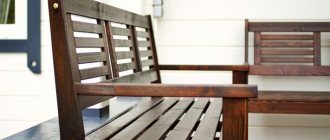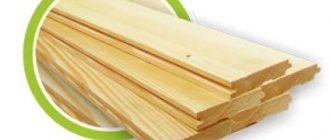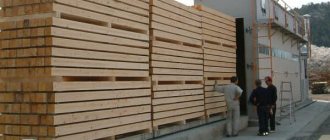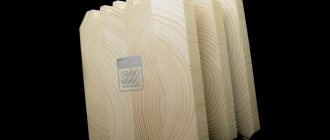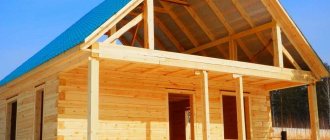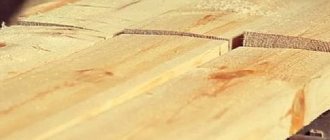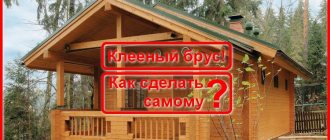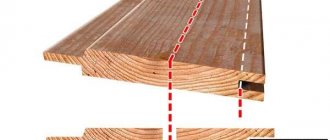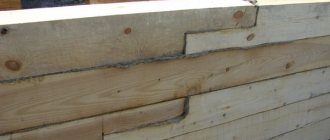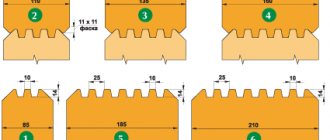The “Kulibins” of our country invent various methods of drying wood, which can be done independently and at home. We have already talked about drying wood by boiling it in salt. Now let's talk about drying wood in the microwave. It is clear that this method is suitable for drying small-sized wood (perfect for drying suvel and burl, including)
Microwave
Unfortunately, microwave manufacturers did not look that far and did not write operating instructions on how and in what mode to dry this or that type of wood. And there is no “wood drying mode” button on any microwave.
Therefore, there is only amateur information obtained experimentally by masters of experiments. We will tell you general recommendations on drying technology. In general, finding the optimal method for drying wood in a microwave can only be achieved through trial and error.
How does moisture evaporate from wood in the microwave?
In the microwave, the wood begins to heat up from the inside. Moisture absorbs the energy of ultra-high frequency electromagnetic oscillations, resulting in the release of heat. Where there is more moisture, heating occurs more intensely. Accordingly, the wettest areas of the bar are heated first, and local drying occurs more intensely.
As wood becomes drier, the amount of heat generated decreases. The moisture content becomes more uniform in the bar. And as a result, we get the material with the required moisture content along the entire perimeter of the piece of wood.
What you need to prepare for drying
- Microwave that supports the function of defrosting food, with a rotating element (plate)
- A block (blank) no larger than the diameter of the microwave plate. It is better not to dry the finished product; no one is immune from cracking of the ends. And if you “gaze” while drying in the microwave, the wood may smoke or become charred. Such troubles are unlikely, but for now, try something you don’t mind. But in general, due to the specifics of the microwave drying process, wood does not crack.
- You can dry several parts at the same time. It is important not to place them on top of each other and not touch each other. This will prevent moisture from escaping.
- Small scales to record changes in wood weight. Warming up can be stopped when the weight stops changing.
Current situation on the lumber market
The need for drying large-sized lumber arose in connection with the development of wooden house-building technologies. After all, it’s no secret that the initial moisture content of wood during the construction of a house is one of the most important indicators. Our forum knows many stories about problems with houses built from timber with natural moisture. When dried, such timber is susceptible to torsion, warping and cracking. And users who study the topic of “dry wood” regularly ask themselves the question of finding high-quality dry material.
dsarichevFORUMHOUSE user
House made of “dry” corrugated timber, built in January 2013. One winter with heating. I took a photo yesterday - there are no cracks. At all.
Messages of this kind, and even accompanied by a couple of supporting photographs, invariably arouse keen interest and requests for contacts from the manufacturer.
However, in order to dry a beam with a cross-section of, say, 200*200 mm, to an acceptable humidity level of 15% for the entire depth of the array, at least 2 months of convective chamber drying will be required. Now think about what manufacturer can afford such a long processing time for the material? A chamber is an expensive piece of equipment with limited capacity, and you can’t buy a lot of them, but in 2 months of drying the timber will turn into “golden”. Economically, this is simply not feasible.
Molodchinin Dmitry GeorgievichDirector
There are enough offers on the market for the sale of dry timber, but in reality the material turns out to be “dried” - the upper layers are dry, but inside the raw material is 30% or more. Unscrupulous manufacturers sell stale or dried timber under the guise of dry timber, lowering prices and discrediting the quality of the material itself.
As practice shows, such timber is susceptible to warping and cracking. Only microwave drying can dry the wood to a moisture content of 10-15%. At the same time, in a microwave chamber, a wood moisture level of 12-18% is achieved literally within a day.
The process of drying wood in the microwave
Step one
Place the block that needs to be dried in the microwave. In the “defrost” mode, we heat it for a minute (the time can be increased, but it’s better to start with a minute, then you will understand. In general, the larger the diameter of the workpiece, the longer the time can be set)
If you set the microwave to a setting other than defrost, this can cause the wood to begin to smolder from the inside.
Step two
After one minute has passed, we take out the block and wrap it in a piece of dry newspaper and put it in a plastic bag, in which make a small hole. This must be done so that during strong evaporation, caused by heating of water molecules inside the wood, the wood does not crack.
Step three
We wait half an hour until the tree cools down and unwrap it. The newspaper will become wet and there will be drops of condensation on the bag. So everything is going right.
Step four
- We weigh the block, remember or write down the weight and dry it again for a minute, take it out, wrap it in dry newspaper and a bag.
- We repeat these manipulations until we see a constant number when weighing. Well, or the figure will change little.
- Since, at the end of drying, little moisture evaporates from the wood, it will no longer be possible to wrap it. There may be three repetitions, or there may be twenty-three. It depends on the initial moisture content of the wood and its species. And the degree of required humidity
Let's summarize the results of drying wood in the microwave
- When the workpiece needs to be dried quickly, drying the wood in the microwave can help.
- Wood that has been dried in the microwave and produces a ringing sound when tapped on a block will not warp or crack over time.
Subscribe to our Yandex.Zen channel
Microwave vacuum drying of wood
Microwave technology is an innovative and effective technology for drying large-section solid wood, thanks to which we can dry timber, logs, carriages to 10% moisture content.
The revolutionary drying method makes it possible to produce wall material that, in its consumer properties and quality, comes close to laminated veneer lumber, and in some respects even surpasses it. The fundamental difference between our technology and others is that wood is heated from the inside, and not from the outside, due to the physical impact of two factors on the wood - microwave waves and vacuum. Microwave waves heat the wood from the core to the edges, and the vacuum allows you to more intensively “pull” moisture out of the wood by turning water into capillaries into steam at temperatures below 100 degrees. There is no need to heat the wood very much, since strong heating leads to deformation and the creation of internal stresses and, as a result, to the formation of large cracks. At the end we get dry wood with minimal cracks. This wood drying technology has undeniable advantages over the ubiquitous traditional drying methods, when the wood is heated from the outside - convective, aerodynamic, press-vacuum, vacuum.
Advantages of Microwave drying technology:
1. Uniqueness of technology.
Microwave drying allows you to dry a large mass of wood (timber, rounded logs, carriages, etc.) to 10% moisture content in a short time.
2. Drying speed.
Microwave drying allows you to dry large wood in a short time. For example: Drying period for timber 200x200 mm. volume 6-7 m3, in the microwave - by vacuum method, ranges from 2 to 4 days, by any other method about 1-2 months.
3. 100% disinfection.
Micro waves destroy all kinds of wood pests, regardless of their location on the surface or inside the wood.
4. Environmental friendliness.
In the production of dry wood, phenol, formaldehyde and other various chemical compounds are not used
5. No shrinkage.
Having ordered and built houses from dry wood produced by us, you can immediately begin finishing your wooden house, because... shrinkage of the house is minimal, unlike wood with natural moisture.
6. Ease of installation.
Due to weight (dry wood is lighter), stability of the material (no torsion, deformation, etc.)
If you want to become the owner of a truly dry solid wood, then contact the MG-GROUP company. At the moment, there are only 2 enterprises in Russia that have such technology.
